Project details
Skill
Cost
Estimated Time
The noble trellis comes in many shapes and sizes, all in the service of giving flowering vines an attractive scaffolding on which to climb. This version in copper can be built for about as much as wood options you’d find at the garden center.
Gluing together plumbing tubing and fittings makes assembly very easy, and the method eliminates the need for saws and fasteners. Over time, the copper will oxidize, giving the structure a worn patina that’s every bit as unique as the plants it supports. Follow along as This Old House special projects editor Eric Hagerman shows you how to create a timeless garden ornament.
Finial: 6-by-6-inch Copper Ball Fence Post Cap, about $31; The Metal Peddler
Overview for Building a Copper Trellis
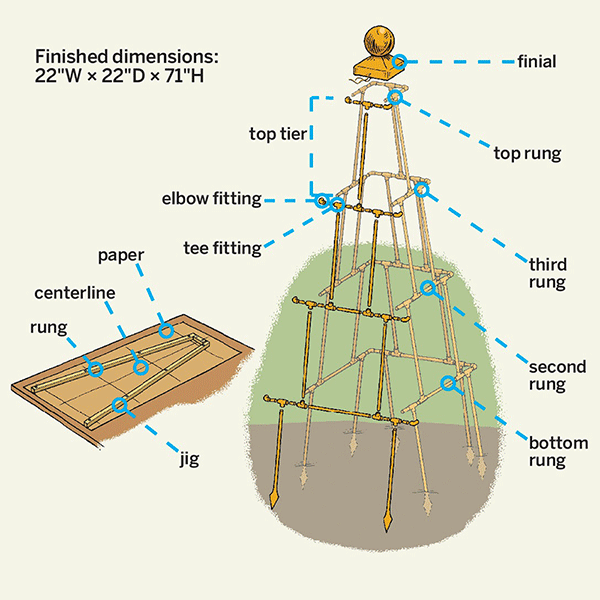
Day-to-Day Timeline:
- Saturday: Construct the frame (Steps 2–13).
- Sunday: Make the legs, install the trellis (Steps 14–18).
Cut List for Building a Copper Trellis:
- 1x scrap lumber. Cut to length (about 7 feet).
- ½-inch 90-degree cup x cup copper elbow fittings. Get 16.
- ½-inch three-way copper tee fittings. Get five bags of 10 fittings.
- ½-inch copper uprights. Cut to fit.
- ½-inch copper couplings. Cut to fit.
- ½-inch copper legs. Cut to fit.
Step 1: Draw the Template
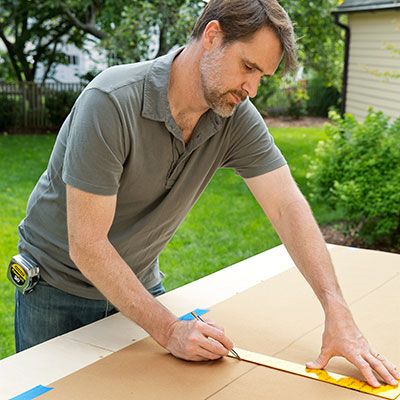
Tape a sheet of paper to a worktable. Use a long straightedge to draw a line down its center the distance from the top to the bottom rung, based on a design of your liking.
At the top of the line, draw a perpendicular line the same length as the interior dimension of your finial; at the other end, draw a perpendicular line the width of the bottom rung.
Now make two more perpendicular lines equidistant between the first two, as shown, for the two middle rungs.
Step 2: Build the Jig

Cut a long scrap of wood, and, working along one side, line it up with the ends of the lines for the top and bottom rungs.
Drill pilot holes through the scrap and secure it to the worktable with 1½-inch wood screws.
Fix a second piece of scrap in a mirror image on the opposite side. Add a short piece of scrap between the two, positioning it ¼ inch above the line for the top rung.
Step 3: Lay Out the Fittings
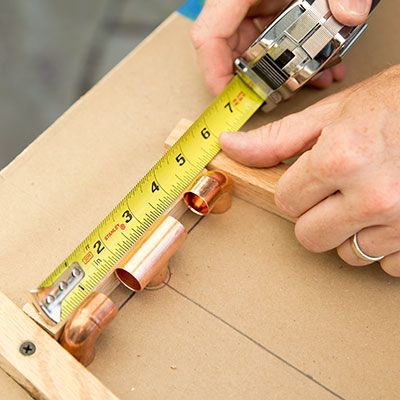
Stand a tee fitting against the jig, centered at the intersection of the line for the top rung and the template’s centerline.
Stand an elbow fitting upright at each end of the line. The openings of all three fittings should be in-line.
To determine your coupling length, measure the space between an elbow and the tee and add 1 inch to account for the stops, which are ½ inch deep on each fitting. Jot down the length of the couplings as you go.
Step 4: Mark the Couplings
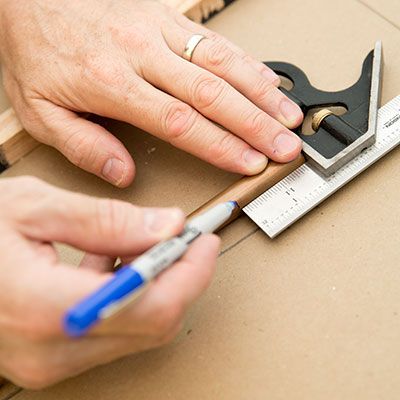
Adjust the combination square to the coupling length, and use it to mark a length of copper tubing, as shown. Slip the tube cutter onto the tubing, line up the blade with the mark, and clamp the cutting wheel down. Spin the tube cutter in place, tightening it as needed until the piece is cut. Cut another one to the same length.
Step 5: Dry-Fit the Tier
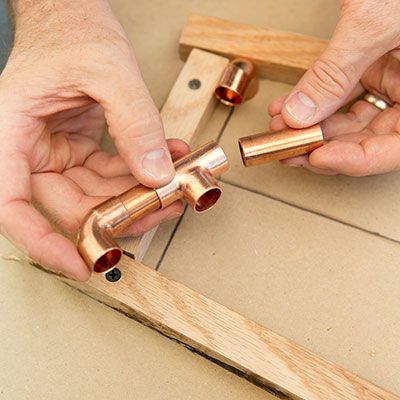
Insert a coupling into each side of the tee, and slip the elbows onto the couplings’ exposed ends, as shown. Place the assembly on the template line to make sure it fits within the jig. The tee should be flat on the table, and the elbows should be pointing up.
Step 6: Measure the Upright
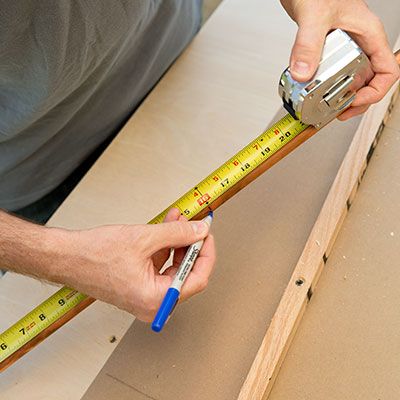
Place a tee where the centerline intersects the third rung, with its stem pointed toward the top rung. Measure between the two tees and add 1 inch for the stops. Transfer that measurement onto a length of copper tubing, as shown, to mark the upright that connects the two rungs.
Step 7: Cut the Upright
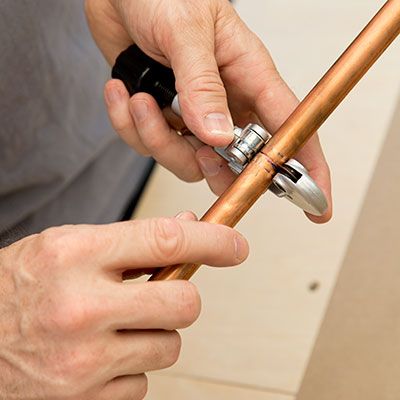
Cut the tubing, as shown. Fit the upright between the tees in the two rungs. Make sure the tee for the third rung lands on the line.
Tip: When using a tube cutter, tighten the knob one-quarter turn after each full rotation around the tube.
Step 8: Assemble the Third Rung
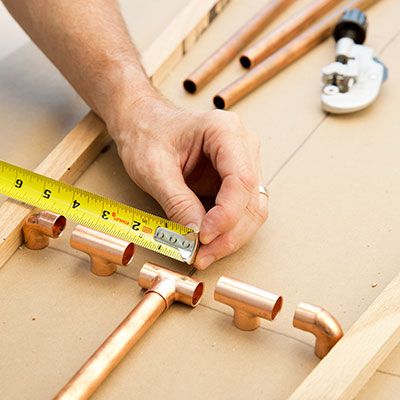
Stand an elbow at either end of the line for the third rung, against the jig, openings toward the center.
Stand two more tees on the line, for the uprights in the tier below, centered in the space between the center tee and the elbows.
Measure, mark, and cut four couplings of the same length to connect the five fittings. Assemble the pieces to finish the rung.
Step 9: Connect the Middle Rungs
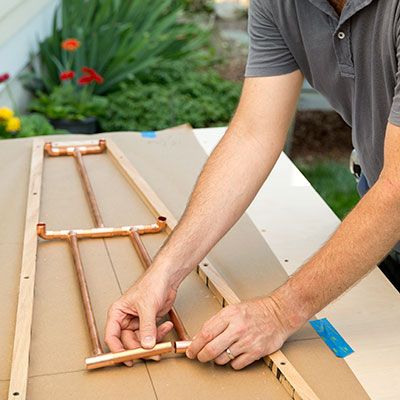
Cut two uprights the same length as the one in the top tier. Fit them into the tees of the third rung, put tees on the other end, and measure to the outer line at both ends, to get them parallel. Measure and cut a coupling to fit between the tees, and slip it into place, as shown.
Step 10: Finish the Rungs
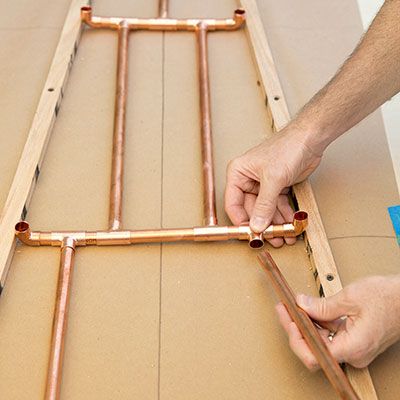
Stand elbows at each end of the line for the second rung. Center a tee fitting between the elbows and the tees for the uprights.
Cut couplings to connect the fittings, and assemble the rung.
Cut the next set of uprights to extend to the bottom rung. Add a pair of tees between the elbows and tees for the uprights, to hold the legs.
Measure, cut, and fit the couplings to complete the bottom rung.
Step 11: Glue the Pieces
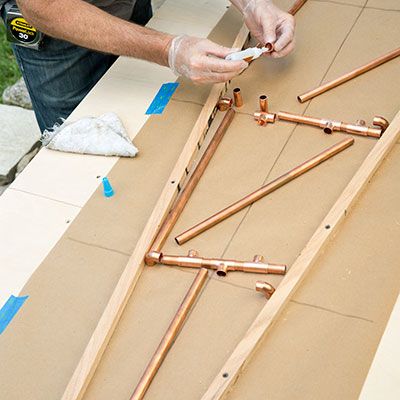
Disassemble the side. Now, one connection at a time, apply a bead of super glue inside each tee—but not the elbows yet—and press the coupling into the shoulder for 1 minute. Glue together each rung assembly, then glue the uprights in place to connect the rungs of the first side. Cut three of each coupling, and build the remaining three sides the same way.
Step 12: Join the Sides
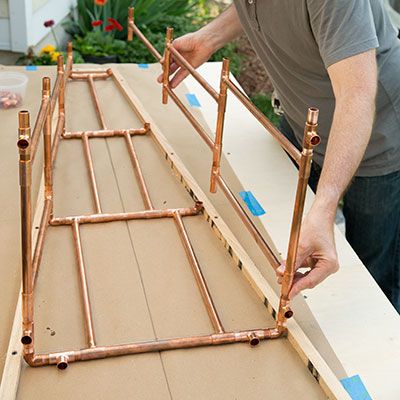
Dry-fit the elbows on the side in the jig. Rotate the four along one side so that they’re vertical, and apply glue to their open ends.
Take an assembled side and fit it into the elbows, one rung at a time. Press the side in place until the glue sets, then glue and install the third side, too, as shown.
Place the fourth side in the jig with dry-fit elbows, and glue and install the three-sided assembly to the elbows. Glue the last set of elbows one at a time, taking care not to break any of the bonds.
Step 13: Hammer the Legs
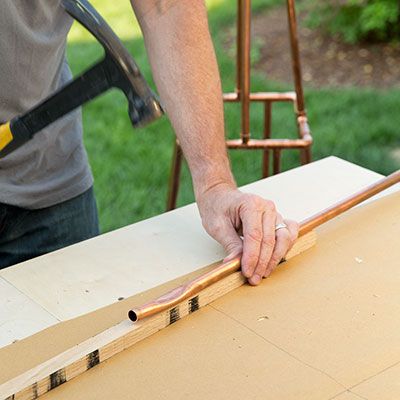
Use the tube cutter to make eight legs of an equal length—at least 12 inches so that they can be tapped securely into the soil. Rest a leg on the jig, and hammer the bottom few inches flat.
Step 14: Cut the Legs
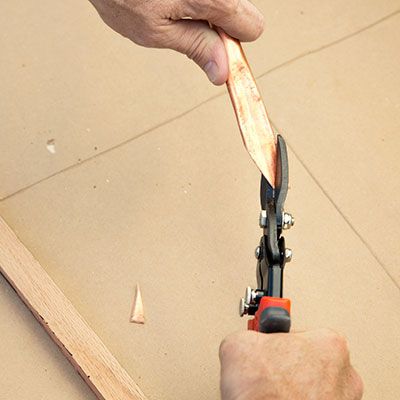
Using the tin snips, cut a V-shaped point into the bottom of each leg, as shown; the point will make it easier to pound the leg into the soil.
Step 15: Install the Finial
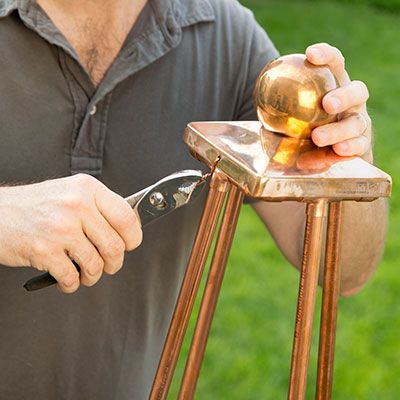
Set the finial in place. Thread 16-gauge copper wire through the holes, wrap it around the copper tubing, and twist the wire with the pliers to secure the finial.
Step 16: Install the Legs
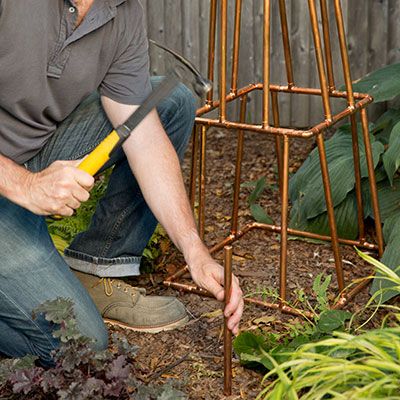
Select a spot for the trellis. Make a hole with a garden stake, then tap the first leg into the soil, as shown. Set the trellis on the first leg and use it as a guide to position the remaining legs. Tap them in place, adjusting their height as needed to get the structure to stand plumb.
Step 17: Guide the Vines

Plant a vine at the base of the trellis and wrap it around the uprights, as shown. Every foot or so, tie the vine to the tubing with a wire plant tie. Check back periodically during the growing season, guiding the vine around the trellis and securing it with ties.
Tools
 Straight edge
Straight edge Pencil
Pencil Drill/driver
Drill/driver Tape measure
Tape measure Combination square
Combination square Permanent marker
Permanent marker tube cutter
tube cutter Hammer
Hammer tin snips
tin snips Pliers
Pliers










